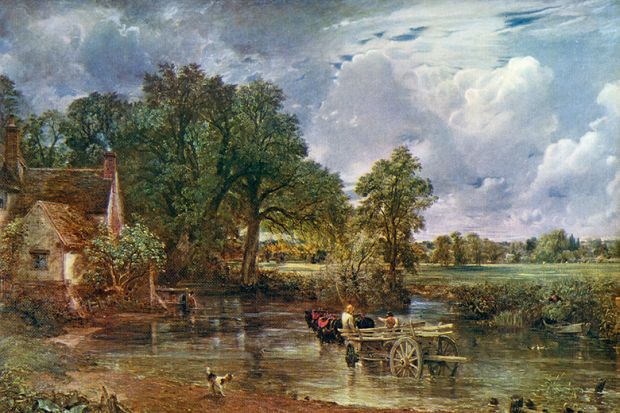Paul Readman’s Storied Ground offers that rare thing in scholarly criticism: an academic study that is also a pleasure to read. Intervening into lively debates among historians, art historians, historical geographers and sociologists concerning English national identity, it argues for the under-appreciated significance of landscape in shaping national consciousness across the long 19th century.
Landscape, here, denotes not simply topography or picturesque natural features but is understood as the “storied” accretion of cultural meanings and associations over time. America has its pioneering “Wild West” and Switzerland its sublime “Alps”, but the English landscape has traditionally been conceived of as a patchwork of idyllic rurality, its pastoral farmsteads and cottages redolent of conservatism.
Given our post-Brexit national dissensus, Readman’s study is timely in its insistence on a more nuanced view of English cultural nationalism as it came of age in the Victorian and Edwardian periods. The analysis brings together an impressive mix of discourses, including Victorian guidebook literature, popular culture, landscape painting and changing juridical conceptions of private property and public benefit as they relate to sites of particular local and national interest.
This is considered alongside relevant material cultures such as emerging preservation and open-spaces activism, heritage societies, antiquarianism and amateur archaeology. Along the way, we receive insightful glosses into footpath disputes in the Lake District and ideological battles over the contested space of the New Forest: between ancien régime attitudes to blood sports, the naval imperative to produce timber, silvicultural arguments for deer removal and a new idea of the forest as a public amenity essential for national health.
Storied Ground is at pains to emphasise the plurality of landscapes that contributed to a sense of English national identity through their “associational value”. Chapters exploring the Victorian “shock-city” of Manchester and the Thames riverscape add an urban dimension to discussions of the picturesque. Genteel Victorian and Edwardian tourists, Readman reminds us, were equally impressed by the looming mills of the industrial North’s “Cottonopolis” as they were by the arcadian vistas of the Lakes. Contemporary guidebooks even recommended walking tours of the city’s warehouses and factories, which Thomas Carlyle described as “sublime as a Niagara, or more so”.
For all its command of this breadth of primary materials, Storied Grounds is haunted by the almost complete absence of any sense of British imperialism. Readman’s defence is his focus on English nationalism, usually overlooked in favour of the union’s more interesting political nationalisms as they developed in Scotland, Ireland and Wales.
But his argument that English identity is particularly insular (as represented by the enduring potency of Dover’s white cliffs as a significant national landscape) is undermined by the final chapter on the River Thames. For all the intriguing details of conflicts between Thames landowners and pleasure-seeking daytrippers, the complaints about noisy steam-launches and indecent bathing, this chapter omits the largest story of all in the culmination of English affluence and national pride: that of Empire. This is a glaring omission and one that confirms the parochial qualities of English nationalism in an otherwise important and comprehensive study of the relationship between people and landscape.
Caroline Edwards is senior lecturer in modern and contemporary literature and cultural studies at Birkbeck, University of London.
Storied Ground: Landscape and the Shaping of English National Identity
By Paul Readman
Cambridge University Press 360pp, £24.99
ISBN 9781108424738
Published 29 March 2018
POSTSCRIPT:
Print headline: A parochial view of grand vistas
Register to continue
Why register?
- Registration is free and only takes a moment
- Once registered, you can read 3 articles a month
- Sign up for our newsletter
Subscribe
Or subscribe for unlimited access to:
- Unlimited access to news, views, insights & reviews
- Digital editions
- Digital access to THE’s university and college rankings analysis
Already registered or a current subscriber? Login



